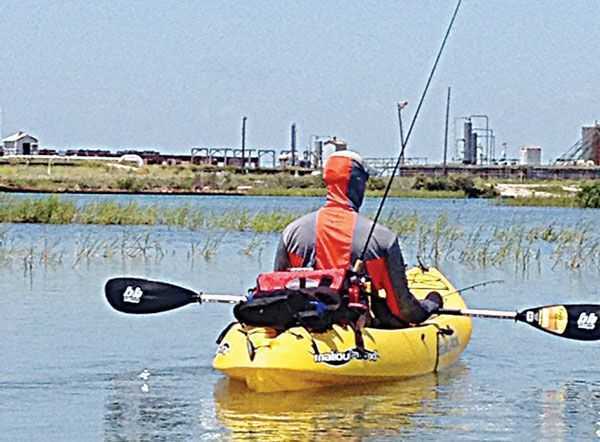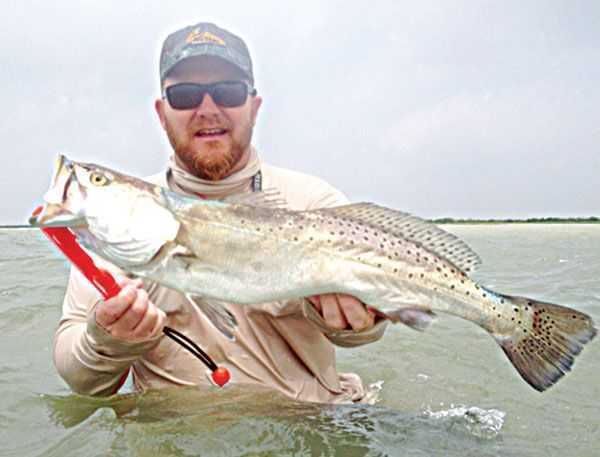
Each year the winds of spring blow hard ‘on-shore’ bolstered by low-pressure systems riding up ever weakening frontal patterns. The ever warming surface aiding the pressure differential causes the increased wind velocity making it difficult to navigate any small craft, and certainly frustrating anglers with increased speed of drift, casting difficulty to favored shorelines and structures, and sometimes difficulty feeling the bite through lines that are bowed wide by the wind. I have on occasion felt wind gust on my rod that felt like fish strikes. Now, That’s Windy! Planning is the key to getting on the water, and not being blown off and out of the fish.
To effectively fish the spring winds with a kayak one must plan and plan well. First, don’t let the wind stop you. While the wind does make the water increasingly ‘dirty’ (actually, the true term is ‘turbid’ which is defined by Webster’s as ‘cloudy, opaque, or thick with suspended matter’), the wind can benefit fishing in several different ways. It increases oxygen content, mixes, and thus warms the water column, and creates currents. Each of these can lead to increase feeding activity. Second, use the wind as your ally. Paddle into the wind on your way out as the wind in calmer at daylight, and return with the wind. Take care that you can handle your craft in the larger waves. The wind can also be used to help you cover water this way as well as cover water sight casting shallow flats. Third, plan according to the season and the seasonal movement of baitfish and fish schools. And finally, know when to employ the opposite approach to covering water quickly, know when to get out of the kayak and wade a shoreline or bank (keep your Simm’s waders on until the water temperature hit’s 70 degrees). Wading is an incredible way to maximize your effectiveness with your kayak. Combining each of the above will make for effective spring trip fishing from a kayak.

If you are a kayaker and it’s spring, I’d look toward smaller bodies of water. Whether it’s a smaller bay fed by a gulf inlet or a small marsh pond, both are great options for different reason and you’ll be better able to navigate your craft under the reduced wave periods in smaller water bodies. Turbidity will also be reduced in smaller water bodies, but I wouldn’t worry too much about that parameter. Those fish feed everyday on nearly silent almost invisible forage in all water conditions. Many times some of the best fishing conditions can be caused by cleaner water being adjacent to turbid waters. During the spring look for this to happen more readily in smaller water bodies. One last area can be beneficial to look for these conditions and that is the narrowing of larger water bodies as long as the water body is primarily perpendicular to the wind. Any body of water that is less than a quarter mile across will provide sufficient protection from conditions getting out of hand. Water bodies deeper than 4 feet will have larger waves so stay mindful if conditions worsen and by all means stay safe.
Let’s talk more about fishing these conditions. We mentioned above that the wind creates currents. How can you as a kayaker take advantage of this and capitalize on the spring winds. Look for shoals, reefs, and edges of flats adjacent to the current. Baitfish will still look for structure and refuge and they’ll take advantage of the refuge from current near structures…. This will draw in the predators. If you see signs of feeding activity, this is where it pays to know when to stop and beach the kayak safely on top of the shoal. One should always deploy and set an anchor as well as position the kayak out of the water on top of an exposed reef or shoal if possible prior to getting out to wade. Once out of the kayak, slow down and fish the area thoroughly presenting your lure cross current as much as possible. To do this, keep your rod low to the water to reduce the wind’s effect on your line.
[easy-social-share]